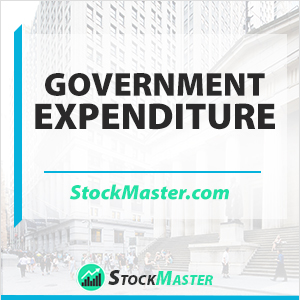 What are Government Expenditures?
What are Government Expenditures?
Definition: A government expenditure is an economic tool that can be used to influence the economy by redistributing income to increase or decrease economic activity.
Every government has an obligation of meeting various expenses such as the provision of healthcare, defense, and social protection services as well as education. It is referred to as government spending. It may also include investment and transfer of payments, all of which are aimed at sustaining individuals or the combined needs of the community.
Government spending is a tool which activates the redistribution of income. It explains the reason why some governments take up the obligation of sponsoring business startups and industries, which cannot secure funding from the private sector.
Purpose of Government Expenditures
We have mentioned that the government’s spending happens when it’s supplying goods and services, including welfare payments and benefits. It is also responsible for reducing any adverse effects resulting from a variety of externalities like pollution controls.
The government may also choose to increase its spending on the macro-economy. It is primarily aimed at boosting economic activities. On the side, it will spend money to offer training, which, in return, improves labor productivity. The long-term accomplishment is enhanced macro-economy.
Types of Government Expenditures
The government has current and capital spending. The former includes short term expenditures such as wages and raw materials. It means it is renewable every year, given that the figures may change now and then.
Capital spending is for the long term and involves putting in money in assets such as hospitals, roads, buildings, and equipment. They are also known as “social capital,” expenditures, and are not renewable yearly.
Where Does the Government get its Revenue From?
To meet its financial obligations, every government must have sources of revenues. Otherwise, it can be a tall task to take care of various sensitive programs such as healthcare and national defense. The federal government has three primary sources of revenue; Payroll taxes, income taxes, and corporate income taxes.
Payroll taxes give about 35 percent of total revenue, which is from the workers’ wages or salary paychecks. They are used in areas such as Medicare Hospital Insurance and Social Security. The law demands that the cost of these taxes is divided between the employees and employers. However, the employees tend to shoulder the highest portion. It is also worth noting that low – income earners tend to make a more significant contribution compared to the higher-income ones.
Income taxes contribute close to 51 percent of the federal revenue. It is progressive and is mainly from households. Corporate income taxes contribute 6 percent. Other revenue sources, such as estate and excise taxes, provide the remaining 8 percent.
The government may also borrow money from local authorities by issuing bonds if it is not able to support its financial obligations from the council taxes. There is even borrowing from the central government during an economic slowdown.
Over the years, federal revenue from payroll taxes and the individual income has been rising while that from corporate taxes continue to fall. Nonetheless, this may have been affected by the economic downturn of the Great Recession.
Government Spending vs. National Economy
It was then in the 20th century when a majority of governments embarked seriously on public spending. They began to put significant amounts of money in various services as described above. To date, governments from developed countries continue to spend more compared to those in developing countries. Additionally, governments have continued to offer support to the private sector believed to be managing a more significant share of the country’s production of goods and services.
Regardless of the source, the flow of income is very vital in sustaining the national economy. It helps establish and build a relationship between household and domestic firms. Increased flow leads to increased income, increased spending, and eventually increased output.
The government’s expenditure enhances the performance of an economy, and in return, there is a positive influence on the production level and national income.
